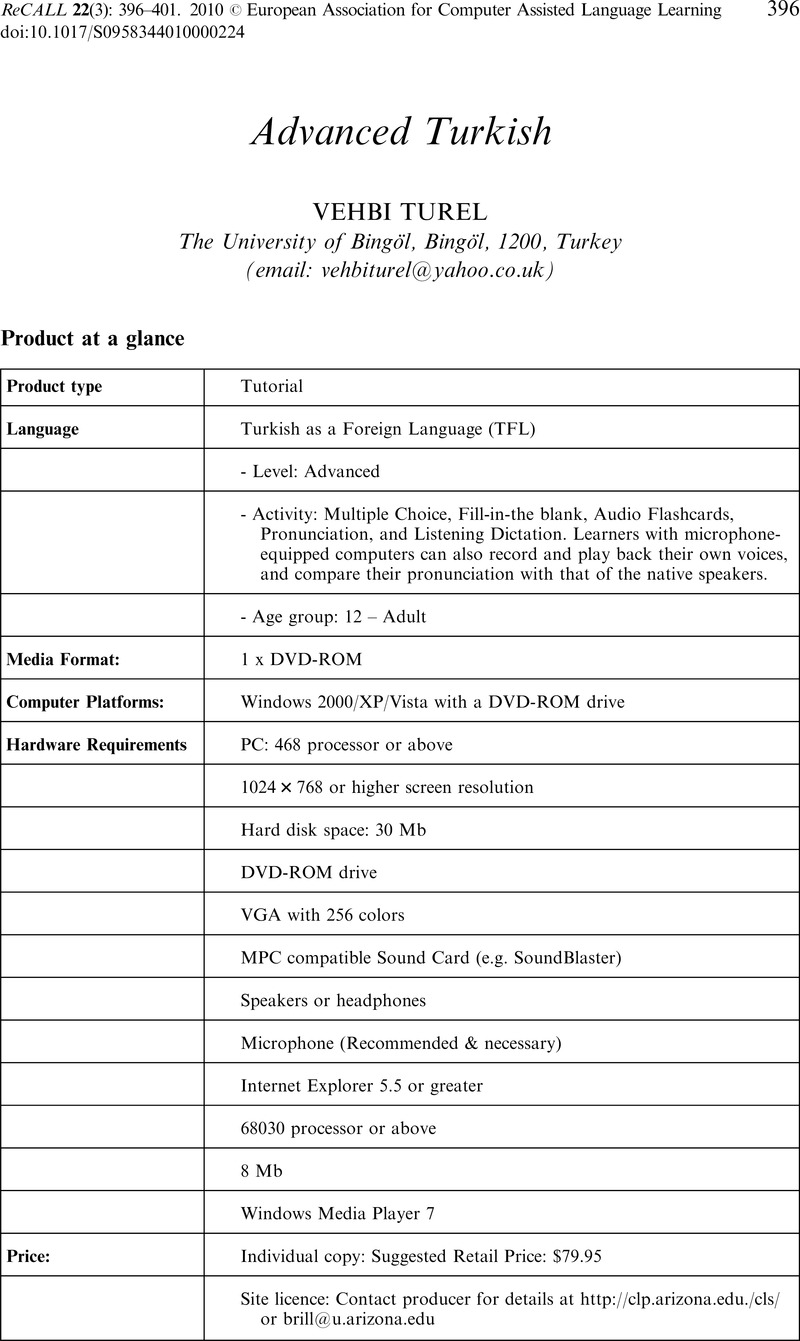Crossref Citations
This article has been cited by the following publications. This list is generated based on data provided by Crossref.
Turel, Vehbi
and
McKenna, Peter
2013.
Computer-Assisted Foreign Language Teaching and Learning.
p.
188.
Turel, Vehbi
and
McKenna, Peter
2014.
Software Design and Development.
p.
1200.
Turel, Vehbi
and
Kılıç, Eylem
2014.
Human Rights and the Impact of ICT in the Public Sphere.
p.
245.
Turel, Vehbi
2014.
Human Rights and the Impact of ICT in the Public Sphere.
p.
268.
Turel, Vehbi
2014.
Encyclopedia of Information Science and Technology, Third Edition.
p.
2495.
Turel, Vehbi
and
McKenna, Peter
2015.
Intelligent Design of Interactive Multimedia Listening Software.
p.
170.
Turel, Vehbi
2015.
Intelligent Design of Interactive Multimedia Listening Software.
p.
47.
Turel, Vehbi
2018.
Encyclopedia of Information Science and Technology, Fourth Edition.
p.
2357.
Turel, Vehbi
and
Kılıç, Eylem
2019.
Computer-Assisted Language Learning.
p.
532.
Turel, Vehbi
2019.
Computer-Assisted Language Learning.
p.
893.
Turel, Vehbi
2019.
Advanced Methodologies and Technologies in Modern Education Delivery.
p.
178.
TÜREL, Vehbi
2023.
Learners’ Perceptions Towards Dual-Coding in Adaptive Hypermedia Environments: Listening Texts, Keywords and Visuals.
Journal of Learning and Teaching in Digital Age,
Vol. 8,
Issue. 1,
p.
32.


